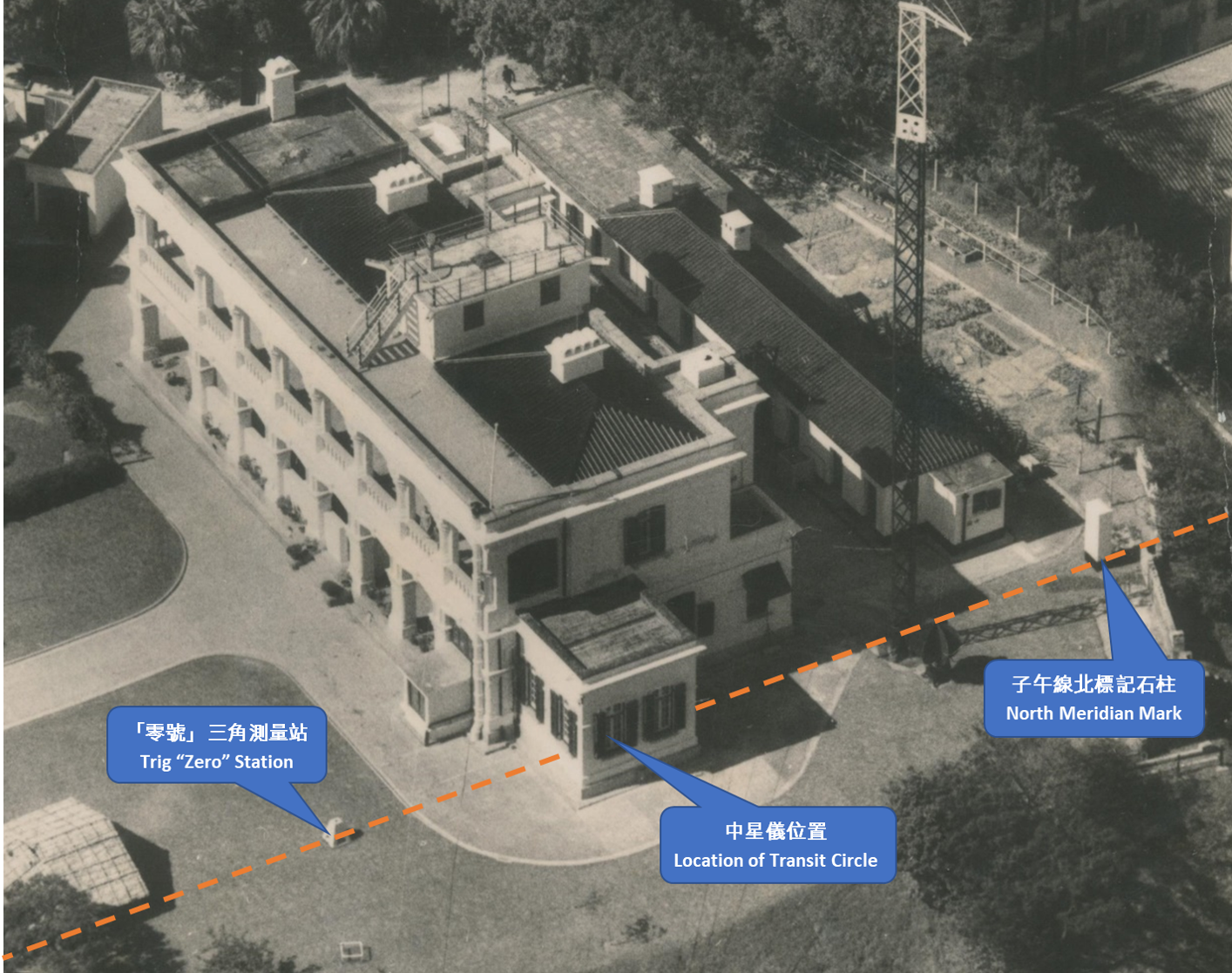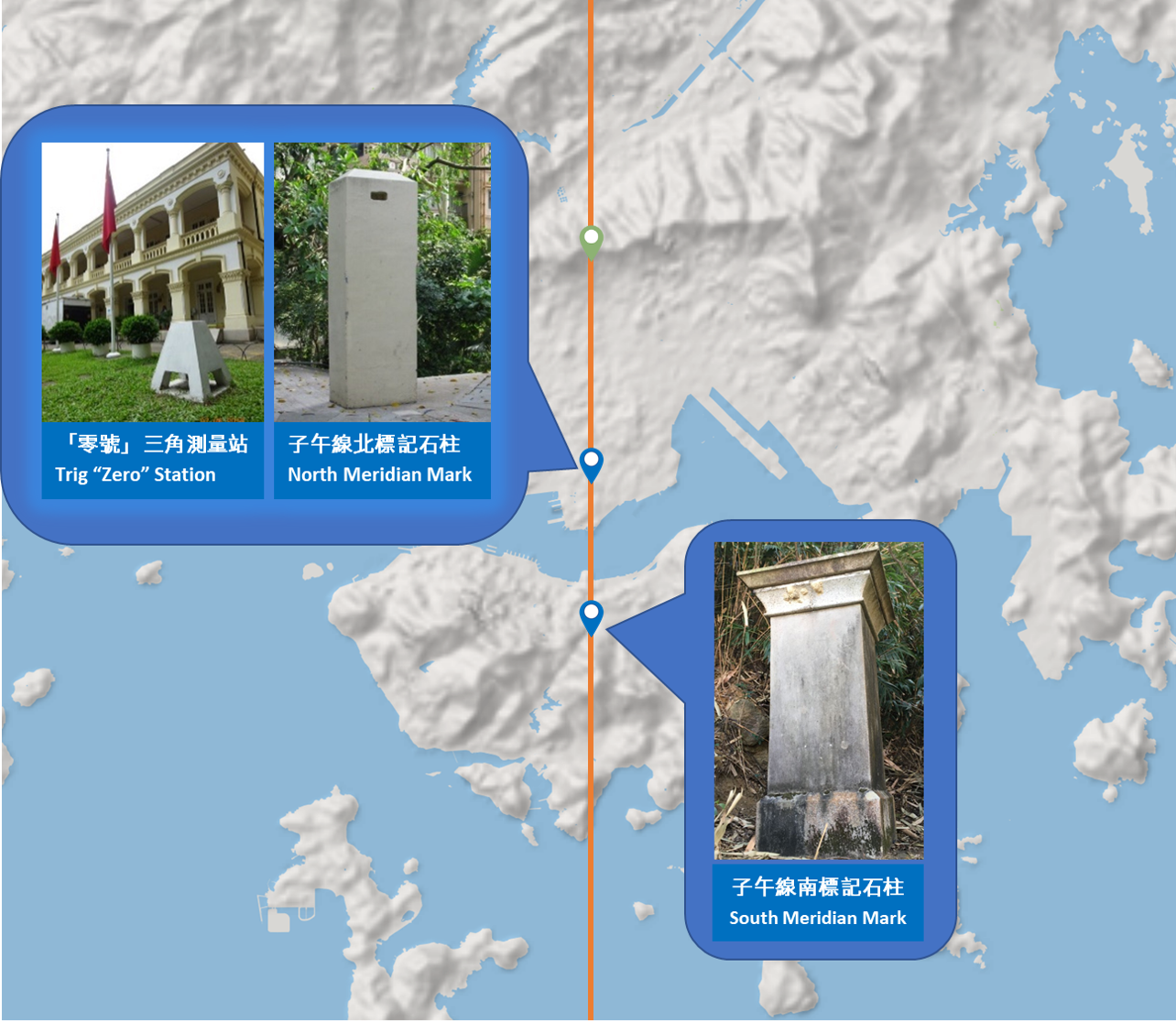Hong Kong Meridian
Hong Kong Meridian
Many may have heard about the Prime Meridian in Greenwich of England. This invisible line passes through the Royal Observatory Greenwich, extending all the way to the North and South Poles. It is what we call the zero degrees longitude. Conceptually speaking, when the sun crosses the Prime Meridian, it is noon in Greenwich Mean Time. Hong Kong also has its own local meridian, the history of which can be traced back to the Observatory's time service in the late 19th Century.
The provision of an accurate time service was one of the major duties of the Observatory at the time of its establishment in 1883. In the early days, astronomical observation was taken by the Observatory with a 3-inch Transit Circle for the determination of local time. The Transit Circle was located right at the Hong Kong Meridian.
Fig.1 An aerial view of the 1883 Building in the Hong Kong Observatory Headquarters in 1951. The dotted line marks the Hong Kong Meridian
The Hong Kong Meridian, marking the longitude of the territory viz. 114°10' East*, passes through the North Meridian Mark, the Trig “Zero” Station (origin of the Hong Kong 1980 Geodetic Datum (HK80)) in the Hong Kong Observatory Headquarters in Tsim Sha Tsui and the South Meridian Mark near Bowen Road in Wan Chai. While these structures may not be very appealing, they have been standing there for more than a century to testify the history of provision of time service in Hong Kong through astronomical observation.
* The longitude in World Geodetic System 1984 (WGS84) is 114°10'27.6'' East.
Fig.2 Location map of North Meridian Mark, Trig “Zero” Station and South Meridian Mark
The meridian defines the midday (“meridies” in Latin) in terms of local solar time, i.e. the time when the Sun crosses the meridian every day. When the Sun or other celestial bodies cross the meridian, they will also reach the “transit”, the highest point in their daily path across the sky. By aiming the transit telescope precisely at the North Meridian Mark and the South Meridian Mark, the telescope will be correctly aligned with the meridian. The Observatory used the telescope to observe the moments when specific stars passed by the Hong Kong Meridian everyday to calibrate the local time reference.
In the old days, the Observatory disseminated the local time signal at 1pm sharp everyday through the Time Ball. This didn’t only offer convenience to the public, but also aided vessels in adjusting the marine chronometers on board and eventually in determining their position.
The Observatory constructed a new pair of meridian marks in 1913. The new South Meridian Mark was built near the shed at the Observatory. It is believed to have been removed in 1933 or before. Erected on the Beacon Hill in Kowloon (Green location pin in Fig.2), the new North Meridian Mark has since been buried in the dense forest on the hillside.
Today, the Observatory's time service no longer relies on astronomical observation. It is now based on the Caesium beam atomic clock, keeping an accuracy within 0.01 millionth second a day.

